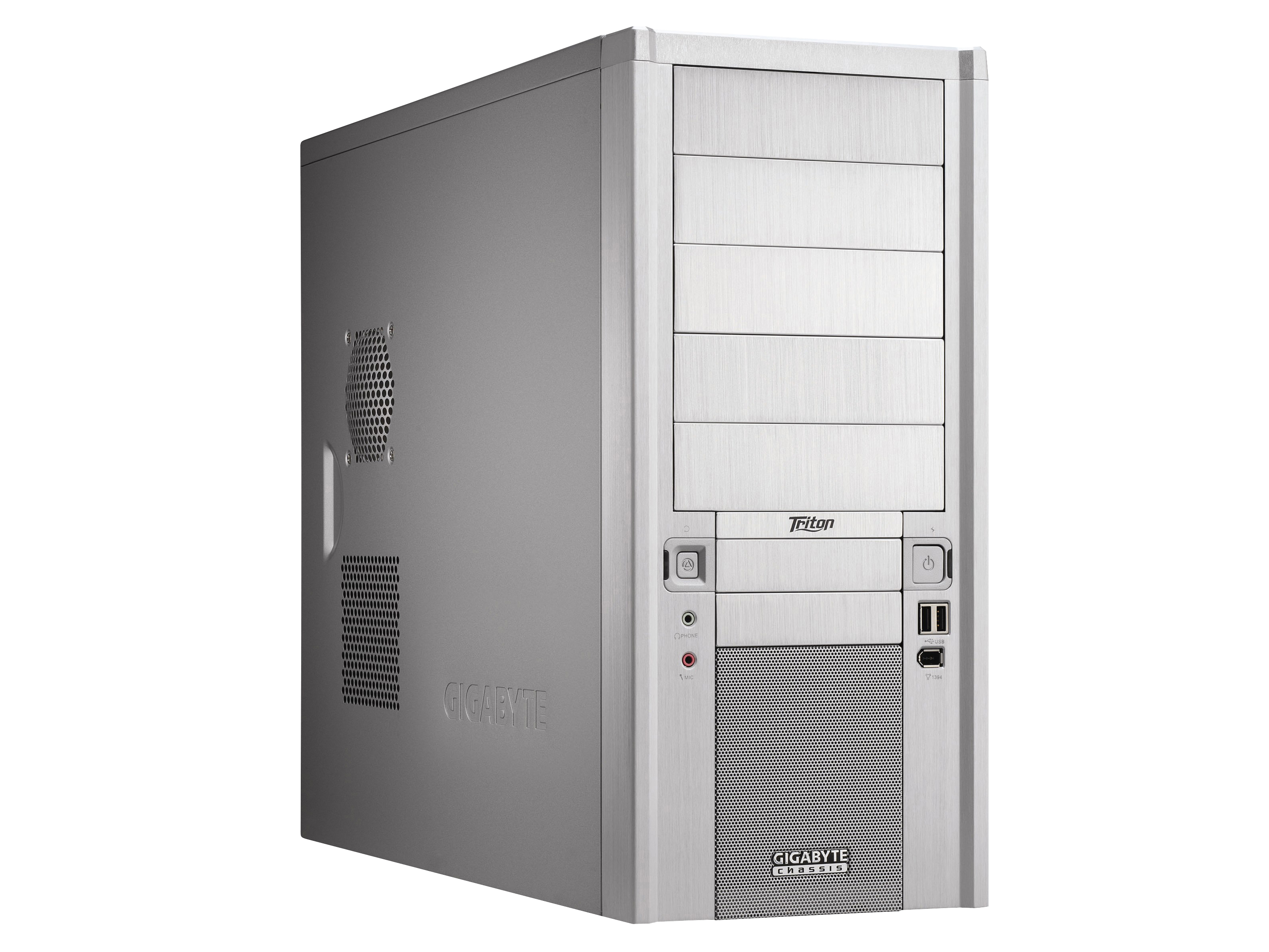TechRadar Verdict
An inexpensive and attractive chassis with thoughtful design. Water-cooling is a bonus, too
Pros
- +
Built with water cooling in mind
Pleasingly simple design
Clean brushed alu finish
Excellent screwless design
Cons
- -
Nothing of consequence
Why you can trust TechRadar
Gigabyte's rather solid-looking 3D Aurora case, while a couple of years old now, is still a popular choice for rig builders and modders. However, at a shade over 100 pounds, it's a bit on the pricey side, pushing it into serious upgrade territory.
The Triton 180 is in the cheap-and-cheerful category, priced as it is around the 49 pound mark. Pleasingly, its budget pretensions are belied by the internal build quality, which is pretty high. The Triton 180 offers screwless design, with sliding clips for the bays, which means swapping out drives is a cinch.
In execution, it's almost dangerously close to the system offered by Cooler Master, which is fine by us; anything that means leaving the screwdriver in the toolbox is a good thing, and that goes for the backplate PCI bays too. In addition, the bottom hard drive bay is set face-on, which makes for easy drive installation even when the chassis is fully loaded.
Outside, it's brushed alu from hat to socks, with the minimum of plastics involved. It'll win no high-falutin' product design awards, and is the very opposite of ostentatious, so if it's flashy LED-drenched bling you're after, look elsewhere. Featuring competent, fuss-free design inside and out though, we're big fans of this inexpensive, highly durable chassis.
Sign up for breaking news, reviews, opinion, top tech deals, and more.
Tech.co.uk was the former name of TechRadar.com. Its staff were at the forefront of the digital publishing revolution, and spearheaded the move to bring consumer technology journalism to its natural home – online. Many of the current TechRadar staff started life a Tech.co.uk staff writer, covering everything from the emerging smartphone market to the evolving market of personal computers. Think of it as the building blocks of the TechRadar you love today.
